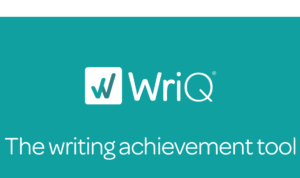6 Tips for Effective ‘Student-Teacher’ Writing Conferences

Whether I’m teaching my unit on narrative writing, a long research paper or a quick lesson on topic sentences, teaching writing is not easy.
It’s nuanced, complicated and not really ever the same. I’ve spent a lot of time trying to figure out how to make the process as simple and streamlined as possible for my students. And one of the key elements to accomplishing that goal has been incorporating teacher conferences into almost every assignment that I do.
During my first seven or so years of teaching, I was always available to stay after to give “extra help.” But as an English teacher, I only needed to do that when my students had an essay due. Inevitably, no one would ever show up—until the day before they had to turn in the paper. Then I would have a long line of students who were hoping for some help with their writing.
Life changed when I had kids. I was no longer willing to stay after school for two or three hours, but I still wanted to help my students with their writing. I started making myself available during study halls instead. However, I had one particularly demanding student whose schedule didn’t allow her to meet with me at any time during the school day.
And so I thought, why not just meet with every student during class?
At first, this seemed crazy. I had been used to taking as long as I wanted to go over essays and papers with my students. Sometimes this meant that I spent as much as a half an hour or forty-five minutes with each one. That system obviously wouldn’t work when I had a class of fifteen or twenty or twenty-five.
After much tweaking and mistake-making, I came up with a system that works. It’s still exhausting, but it all happens during the school day, and it is super rewarding.
These are my six tips for holding efficient teacher writing conferences.
1. Decide how much time you can dedicate to the conferences. I decided that five days was my limit for class time to spend on writing conferences. More than that and students would really be pushed to do work on their own. If I have a smaller class, of course, I don’t need that long.
2. Divide that time into chunks. For me, what works best is to divide the class period into seven-minute chunks. This allows me to do five conferences per day and leaves some time to get students started on an activity and to check in with them at the end of class. So my biggest classes of twenty-five could finish conferences in one school week. I pass around a sheet with the available times and days, and have students sign up for conferences. Then, once I get the class working, I start the conferences by calling up the first student.
3. Set a timer and go. Before beginning each conference, I usually set a timer on my phone so that I can concentrate entirely on my student and her paper, rather than glancing at the clock to see how much time I have left. Additionally, when it’s an alarm saying that the conference is over and not me, it’s a lot easier to move on to the next student.
4. Prioritize the elements of the writing assignment. With seven minutes to read and discuss an entire essay, I have to decide what’s important. I can’t worry about word choice or comma usage at this point in the game. I have a checklist that I go through with each step being more important than the one that comes after.
So, if students are all set on numbers one through four, then we work on number five. But if they are still struggling with number one, then that will be the focus of the conference. My goal in doing writing conferences isn’t to get through the whole list with every student. Rather, what I hope to do is to figure out where they are and take them to the next level.
5. Don’t assume anything about any student. Just because one of my students seemed to master topic sentences on the last essay, that doesn’t mean that a new thesis and a new set of evidence won’t set her back in her organization. Every writing assignment is a new experience, and when it comes to writing, the learning curve is definitely not linear.
6. Help them to understand what they want to say. My ultimate goal in doing writing conferences is to help my students understand what they think. I don’t want to put my own ideas on them, but rather aid them in finding their insights and presenting them in a way that a reader can understand. I don’t want to tell them what would make a good thesis or a great anecdote for their third paragraph—I want to help them understand their own thought process.
All this makes for an exhausting but fulfilling seven minutes. At the end of a day spent doing conferences, I am totally wiped out. But I also know my students a little bit better, and I have helped them develop as writers. I feel pretty good after a day like that.
For more, see:
- Eight Things Students Should Know About The New Media Literacy
- 5 Ways to Teach Students to Think for Themselves
- 6 Suggestions for Using Mentor Texts in the Classroom
Stay in-the-know with all things EdTech and innovations in learning by signing up to receive the weekly Smart Update.







Christina Gil
I made a checklist for teachers to use during conferences (but couldn't fit it into the post). It is available for free by clicking here: https://www.teacherspayteachers.com/Product/Teacher-Student-Writing-Conference-Checklist-For-Persuasive-or-Argument-Essays-2885496